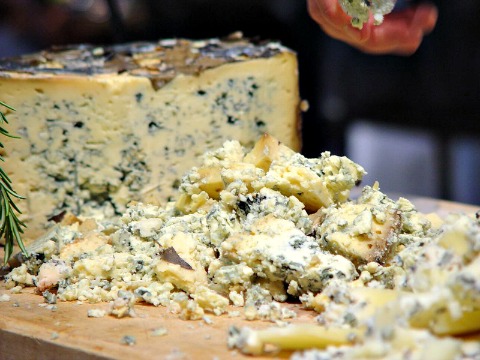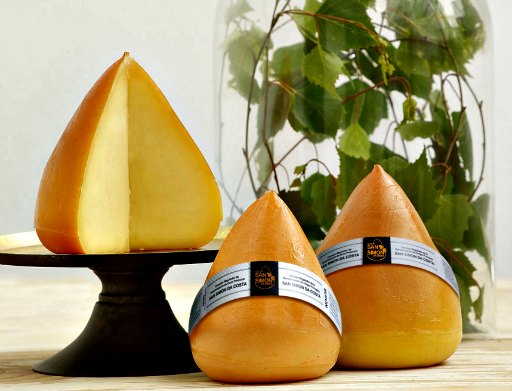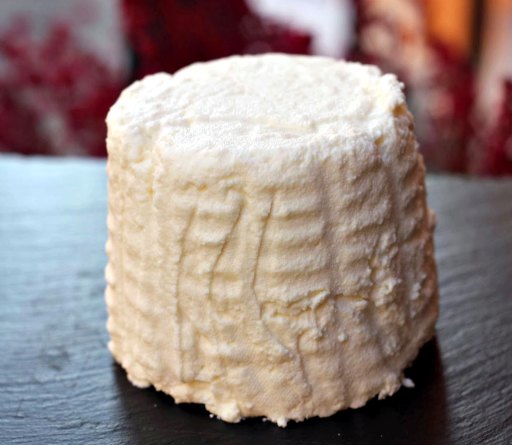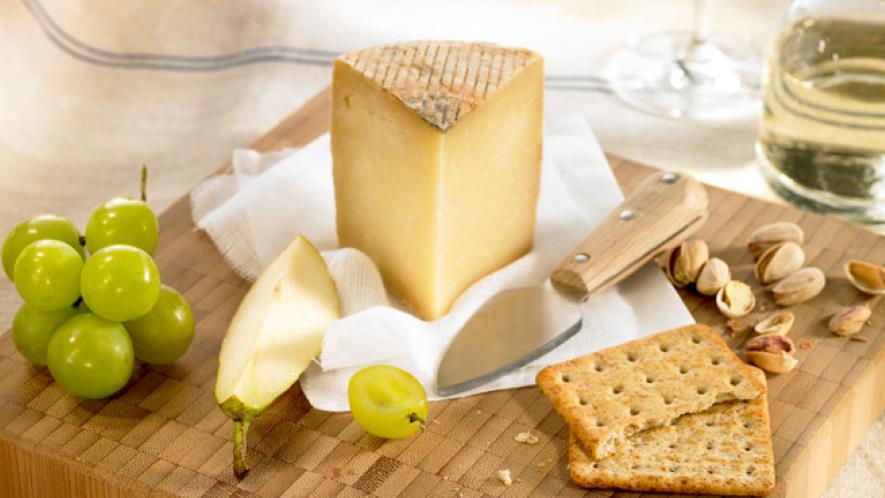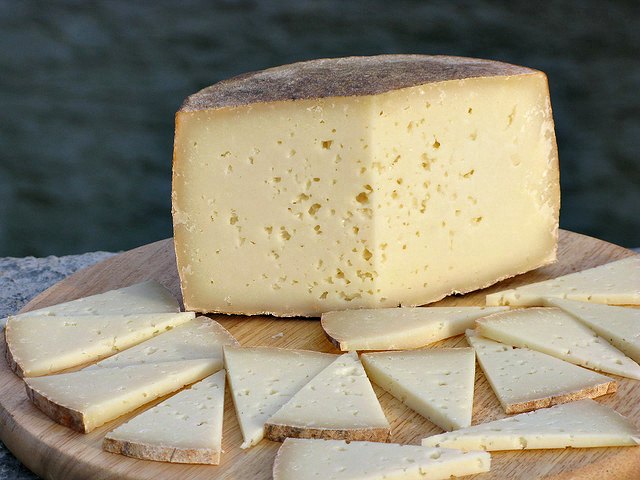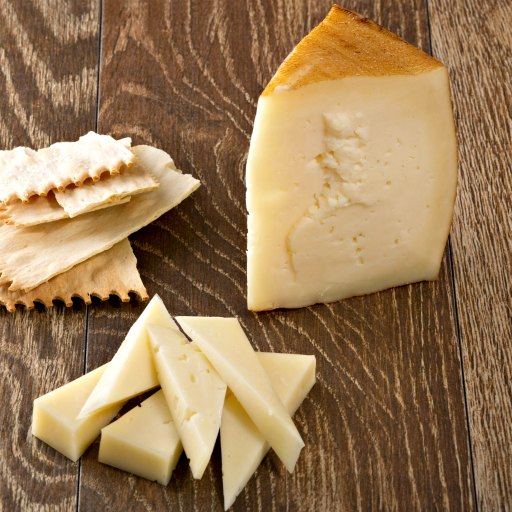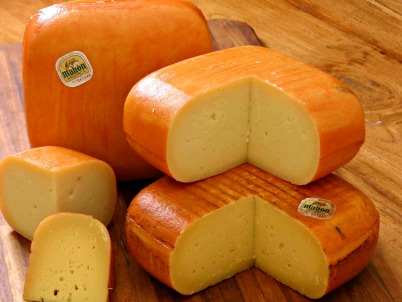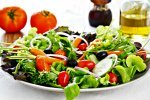Cheese… with pleasure!
In slices, for spreading or in cubes. As a snack, for dessert, in salads or as part of a recipe. Cheese is delicious any way you try it, and it is always a part of any meal worth the name. Simple but delicious, devotees of this dairy product will find more than a hundred different varieties in Spain. It is one of the vital ingredients in Spanish cuisine. Come and discover it!
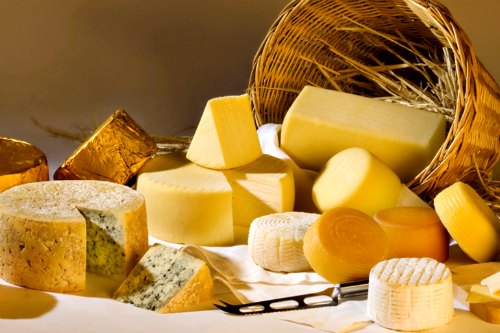
A Hundred and More Cheeses from Spain
Cheese production has always been the standard way of preserving milk. The more than 100 cheeses of all types that exist in Spain today form part of the historical legacy left behind by the many peoples and cultures that have inhabited its territories. For the ancient Romans, cheese was an important addition to their basic diet of cereals and vegetables and essential for farmers and soldiers because it was easy to transport.
The tremendous variety of Spanish cheeses stems from Spain’s geographical and climatic diversity. They are made from cows’, ewes’, and goats’ milk as well as different blends of these, and in most cases the milk is obtained from native breeds. Coagulation may be by enzymes, lactic acid or mixed, and cheeses may be round or square, of different sizes, and with rinds of different colors – often engraved and sometimes smoked, rubbed with oil or flavored with spices. Alongside large-scale industrial production, there are also small dairies producing artisan cheeses that retain their authentic characteristics and traditional flavor.
Sheep are the most genuine type of livestock in Spain. They mostly inhabit the Castilian plains in the center of Spain and the south-west, where there is plenty of pasture, especially during winter and spring. The best-known native breeds are Churro, Merino, Castellano and Manchego, all of which were traditionally reared for their wool, but today are mostly used for the production of cheese. Some of the most important Spanish cheeses are Manchego (also the most popular), Zamorano, Torta de la Serena and Torta del Casar, all covered by Protected Designations of Origin (PDO).
In the mountains of northern Spain, in the Basque Country and Navarre, there are two other types of ewes’ milk cheese covered by a Designation of Origin, Idiazabal and Roncal, both made from more unusual native breeds – Latxa and Carranzana (DO Idiazabal) and Latxa and Rasa Aragonesa (DO Roncal).
Green spain and its cheeses
The rainy, mountainous strip along the northern coast of Spain, separated from the rest of the peninsula by the Picos de Europa, Montes de Galicia and the Pyrenees, is a land of pastures and cultivated grasslands which provide fodder for more than 15 native cattle breeds, all of which are perfectly well-adapted to their natural surroundings.
There are many remote spots that are difficult to get to, and their geographical isolation has led to an extraordinary wealth of different types of cheese. In the Principality of Asturias alone, there are more than twenty different types. Many of the cows' milk cheeses in northern Spain are protected by Designations of Origin such as Tetilla in Galicia, and L'Alt Urgell and La Cerdanya in Catalonia. On the island of Menorca, the northernmost of the Balearic Islands, a cows' milk cheese known as Mahón-Menorca is made, also covered by a PDO.
Goats' and mixed-milk cheeses
Goats are able to eat plants and pastures that are inaccessible to other farm animals. In Spain, they are mostly reared in the austere landscapes along the Mediterranean coast, in the mountains of Andalusia and in parts of Extremadura. Different native breeds and crossbreeds are used. Two DO goats' milk cheeses are Ibores , made in the Extremadura district of the same name using Retinta goats' milk, and Murcia al Vino , made from the milk of the Murcian goat then soaked in red wine. On the Canary Islands, two goats' cheeses are covered by a PDO - Palmero, from the island of La Palma, and Majorero from Fuenteventura. They are similar, but Palmero is usually smoked.
Spain produces milk of the three types practically all year round. Flocks often include mixed breeds so cheeses are often made from mixed milk, especially in the center of Spain. Such cheeses, normally cylindrical in shape, are those which reach the highest production and consumption figures. The most popular of the mixed-milk cheeses is Ibérico, which is mild but has a clearly-defined flavor with a touch of acidity from the high proportion of cows' milk, slight piquancy from the goats' milk and buttery flavors and aromas from the ewes' milk.
In the impressive Picos de Europa sierra, which includes border areas between the regions of Cantabria, Asturias and Castile-León, several blue, soft-paste cheeses are produced. This mountainous terrain in the north of Spain, close to the Bay of Biscay, is home to the natural caves that offer exactly the right degree of humidity and cold air for the external development of the molds which gradually penetrate the cheese, giving it its characteristic blue veining. The best known of such cheeses is Cabrales, which is made on the Asturian side of the Picos, from raw cows' milk to which a little goats' and ewes' milk is added in spring and summer. Cabrales cheese is protected by a DO, as are Picón Bejes-Tresviso and Valdeón , made respectively on the Cantabrian and León sides of the mountain range.
Our Spanish cheese selection
|
Cabrales cheese: Blue-veined cheese made essentially from whole, raw cows’ milk, or from mixtures of two or three types – cows’, ewes’ and goats’ milk. Ripening lasts for a minimum of two months and takes place in natural caves. |
|
Tetilla cheese: Matured cheese, from fresh to semi-cured, ripened for a minimum of seven days, made from whole milk from Friesian, Swiss Brown and Galician Blonde cows fed by traditional techniques.Its flavour is creamy and slightly salty, its texture is fine and its colour yellowish ivory, although undoubtedly its greatest characteristic is the peculiar breast-like shape that gives it its name (tetilla means small breast). |
|
The so-called Burgos cheese takes its name from the Castilian city where it is made. It is a fresh, soft, watery cheese made with sheep's milk. It is considered to be one of the most prestigious cheeses from Castilla y León, together with Villalón. It has a cylindrical shape, with grooves channeled down its sides and grooves marked on its surface. |
|
Manchego is, without a doubt, the most famous cheese in Spain. It has been consumed since time immemorial throughout the region of La Mancha. This has made it possible today for an important cheese industry to develop, which maintains handcrafted production of the cheese. |
|
Roncal cheese: Pressed paste cheese made in the Roncal Valley, in the north Navarre, with raw milk from the Rasa and Lacha breed sheep. It has a sharp flavour, slightly spicy and very buttery on the palate, which is achieved by ageing the cheese for over 4 months. |
|
Idiazabal cheese: made with sheep's milk only in the Basque Country and in the Navarre region.A penetrating, clean aroma, reminiscent of ripe ewes’ milk. Depending on the time of year, the milk production area, the techniques used and the ripening period, the aroma has different degrees of piquancy, acidity and sweetness. In smoked cheeses, the smokiness in the paste should not be too pronounced. |
|
Mahon cheese: Also known as 'Minorcan' cheese, this fresh cheese is made on the Balearic Islands with raw or pasteurised cow's milk from the Frisian, 'Mahonesa' or 'Minorcan', and/or the Alpine Brown breeds. It has a characteristic flavour, slightly acid, salty and a bit buttery. Depending on its ageing, it can be milky and moist when it is fresh, or dry, sharp and somewhat spicy as the ageing time is lengthened. |
